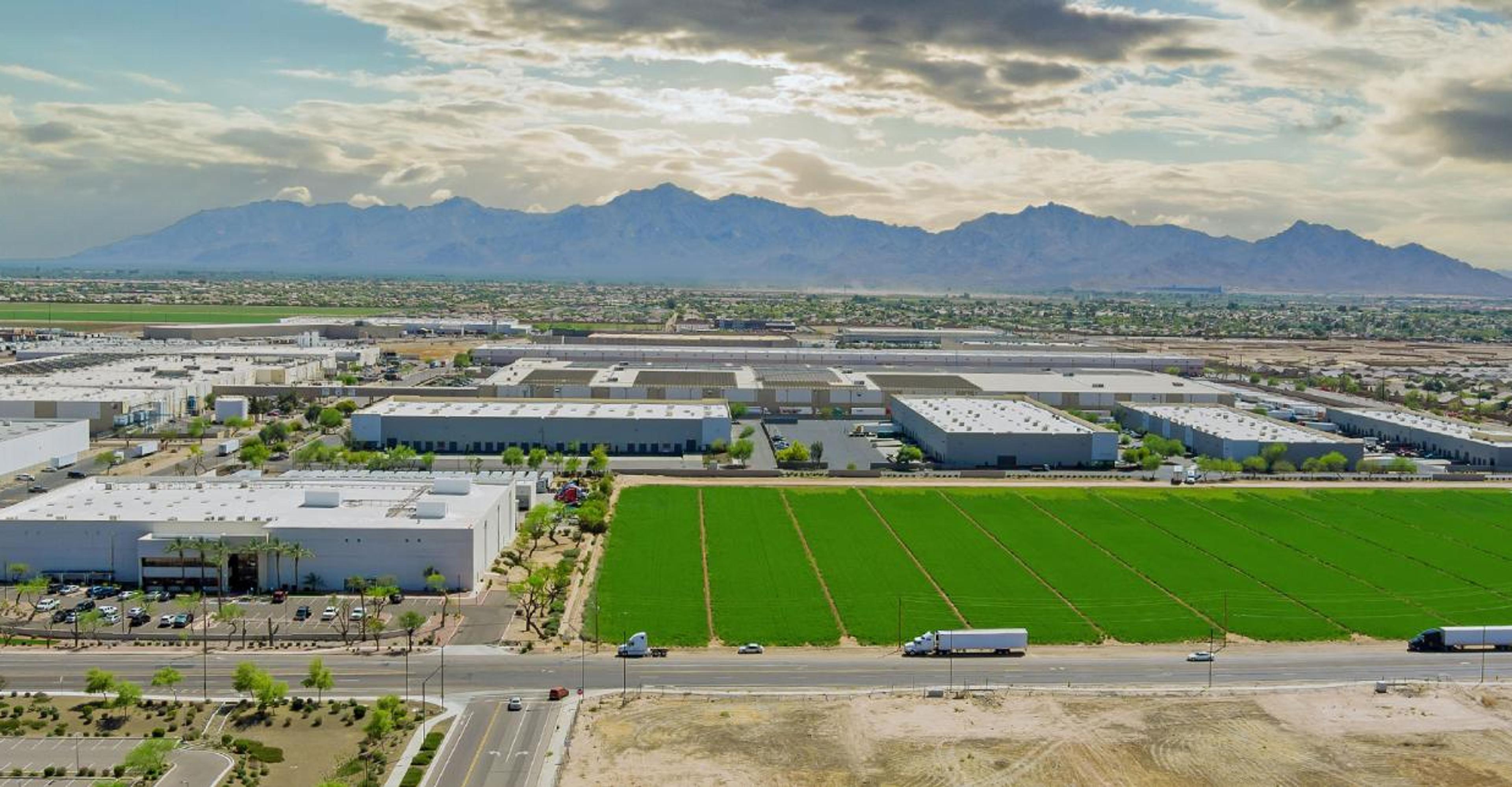2022 Best Practices in Distribution and Warehouse Site Selection

Warehouse Site Selection Dos and Don’ts
Companies must use a myriad of criteria when selecting a warehouse and distribution site, and real estate’s geographical location is just one small part of the overall evaluation. Incentives, labor, logistics, and available resources all factor into site selection decisions, and everything depends on a company’s specific goals and priorities.
In today’s market, companies face increasing rents, delayed builds, rising land costs, and a lack of capacity. The Covid pandemic, the Ukrainian war, rapidly increasing fuel prices and ongoing supply chain challenges are driving existential supply chain challenges, and changing economic factors are leading to shifting transportation and storage demands. To succeed in the current environment, many companies are investing in long- and short-term strategies to secure the space they need today and in the future.
“Across the country, modern bulk distribution building inventory is very limited, mainly brought on by Covid because construction wasn’t happening,” said Bryan Gardner, SIOR, McIntyre Real Estate Services. “In 2023, we see more inventory coming on the market, but we’re in a gap right now.”
Finding space is especially challenging for smaller operations as vacancy rates hit all-time lows. “The big boxes are leaving holes for those companies seeking 50,000 square feet or less,” Gardner said.
One of the most significant issues facing the supply chain industry is the rising cost of rent for warehouse and distribution center space. Prologis reported that a sustained high consumer demand along with new project delays have kept supply tight. In the first quarter of 2022, rents rose 41.5 percent in the U.S., and Prologis is forecasting U.S. market rents to increase 22 percent this year.
Finding the Best Location
A location’s needs can vary based on customer demands. When getting to know a customer and the customer’s needs, Fred Schmidt, chief operating officer of GeoEconomic Institute, a member of The MetaResource Group and an affiliate of RV3 Solutions, asks a series of questions about labor, logistics and priorities. “You’re asking questions all around the continuum,” he said.
According to Jim Reeb, chief impact officer of GeoEconomic Institute, every customer has different needs. “E-commerce is different than business-to-business. There are tradeoffs with cost and service levels, and there are multiple supply chain strategies,” he said. “Inventory optimization by product line and customer segment is key, and it is all data analytics.”
There can be conflicting priorities within an organization depending on the department. “Their metrics are different, so their agenda is different. As advisors, we have to define a consensus among them. That is only done through data-driven decisions,” Reeb said. “You drive down into a network analysis, which allows us to have a consensus among the marketing, operating, finance, and brand managers.”
Understanding a company’s needs as well as its customers is critical. “Some companies are serving an internal or external customer. We have to understand what constituencies they are serving and how they are going out into the marketplace,” Schmidt said.
Added Reeb, “We craft the data behind the alternative scenarios that will allow them to pick the best strategy.”
Taking a Macro View of Site Selection Criteria
When examining the best location for a warehouse and distribution center, a site’s strengths and weaknesses are dependent on macro and micro trends.
Inventory Management
Consumer demands have been erratic, contributing to rapidly changing inventory needs. To help meet demand, some companies are building buffer inventory, increasing their stock of raw materials and buffering finished goods.
“Demand for inventory buffer is a classic risk management tool and that is not going away. Consumer demand, weather, political changes, and natural phenomena all create concerns,” Reeb said. “Nobody knows what the future is going to be. When you don’t know what the future will hold, you put products in a storage facility.”
The cost of inventory is critical. “If you have too many locations, it can be too high,” Schmidt said. “Each industry has its set of variables and each of the variables have a different model. E-commerce is different than pallet based and truckload.”
However, not every facility or product category has the same needs. “The real estate industry often jumps on trends and says all things get painted with the same brush, but if you look at a particular product, its lifecycle and its demand, it will tell you if demand is regional or consolidated,” Reeb explained, adding that some inventory, such as medical supplies, needs to be regional, while other inventory is best managed in aggregate. “As service level performance goes up you have to be more regionally focused.”
Consumer Expectations
With business-to-consumer shipments, speed can be a priority. Consumers increasingly expect rapid shipments. Some companies are decentralizing their distribution centers and warehouse locations to facilitate two-day, next-day or even same-day shipping in major markets.
Near Shoring
One macro trend influencing whether inventory is centralized or decentralized is the reshoring and onshoring of production in North America, Schmidt said.
In the 2022 26th Annual Third-Party Logistics Study, 62% of shippers said they believe that supply chains have become too lean, taking out too much in an effort to reduce cost and on-hand inventory. Similarly, 68% of shippers believe that supply chains have become too global and must be rebalanced towards more regional and local/domestic ecosystems within larger global enterprises.
As companies shift operations closer to home, distribution and warehousing needs change. “We’re going to evolve into a trading block,” Schmidt said. “How does that manifest itself to facilities? We will see it accelerate.”
Labor Needs
Real estate costs are just one part of the equation. Expenses associated with human capital and technology also come into play. When selecting a site, companies must factor in the available workforce, now and in the future. Additionally, companies need to look at general wages, the cost of living and the price of housing, which is a major driver. “You take the average household wage of the person with the skills you’re looking to hire and multiply that by three or four. If you can’t buy a house of reasonable quality for that amount, you don’t go there,” Reeb said.
Labor issues also factor into a company’s overall approach. “Every single client is going to ask about labor and environmental, social governance”, Schmidt explained. “Those are just as important as the hard assets as well for many companies now.”
Social determinants of health—conditions in the places where people live, learn, work, and play—are a growing factor, especially as companies grow increasingly interested in environmental, social, and governance (ESG). “Every company we work with is being ranked on the ESG index,” Reeb said.
Sustainability is a growing priority for investors, employees, consumers and the public, and companies are adopting initiatives to support their ESG goals. The 26th Annual Third-Party Logistics Study reported that among shippers, 59% said their organization had an ESG program with defined goals and objectives, and 45% of 3PL providers said their organization had an established ESG program.
The relevance, importance and commitment to sustainability is evident among many organizations throughout the world, and for many organizations, that starts with its people. Companies are increasingly valuing diversity, equity, and inclusion along with work-life balance and fair labor practices.
“When you get into that, you have the vice president of human resources coming into the mix. They’re looking at various factors, such as the drug utilization in the community,” Reeb said. “Every company we work with is being ranked on the ESG index.”
Reeb said turnover can be detrimental to a facility. “If you go to the wrong location, labor will kill you in three years. Labor will trump real estate costs.”
If a location lacks enough labor to meet demand, facilities could add more automation, but that takes increased capital. “It isn’t about optimizing any one component of cost of goods sold. It is about optimizing the entire solution,” Schmidt said. “You have to run multiple models sequentially.”
Examining Microtrends
Microtrends within a region also factor into site selection. “A state’s political environment and state and local tax issues contribute to decision-making. Moreover, incentives aren’t always the primary driver but can reduce the weighted cost of capital, making a location more appealing”, Reeb explained. “That can help reduce a capital investment,” Schmidt said.
Proximity to suppliers, customers, and logistics hubs is a determining factor as well. Facilities positioned next to major interstates or shipping centers can cut costs and improve shipping speeds. Seeing that proximity is easier than ever with Google Earth, and Reeb said much of the selection process has gone virtual and occurs digitally. “Google Earth is a great way to tour. Clients can look at properties and make decisions quickly,” he said, adding that about 80% of the site selection process is done digitally now.
Utility costs and availability in a particular region also factor into overall site selection. Availability of water as well as electric costs vary from site to site and are a major factor for competing locations.
Combining a Short- and Long-term Approach
Given all the challenges associated with available warehouse and distribution space, many companies embrace a short- and long-term approach to their space needs. “It is challenging to forecast right now given the current wave of change,” Schmidt said. “There is no simple answer.”
Because space, including land, is at a premium, companies opting for new, build-to-suit construction must account for labor and construction challenges. “The availability of supplies and labor in addition to traditional approvals factor into scheduling. Almost everything is delayed right now,” Schmidt said.
For some companies, two-to-three-year planning horizons are needed. “Most of our projects need a year to a year-and-a-half before somebody makes a decision,” Reeb said.
Schmidt foresees the adaptive re-use of obsolete sites. “The land cost is comparable to what office space used to be in New York,” he said.
Companies are increasingly turning to third-party logistics providers. “They’re using 3PL locations because they have existing capacity and flexibility,” Reeb said.
Gardner added that 3PLs have done all the work to build facilities in locations that can reach U.S. population in an efficient manner. They also offer the ability for shippers to share space and labor, which can help keep costs down.
3PLs can also help maximize the space within existing warehouse facilities to create a better, more efficient layout for multi-level fulfillment pick operations. Technology, including wearable devices, robots and other warehouse automation, can improve warehouse efficiency to increase efficiency.
Site Selection: Selecting the Right Strategy
Choosing a warehouse or distribution center location requires extensive research, planning and consideration of macro and microtrends. 3PLs like ITS Logistics continue to invest in new facilities and capacity, customized technology solutions, and their team members have years of expertise in every type of fulfillment services and distribution services, drayage and intermodal services, dedicated fleet services for full omnichannel supply chain solutions.
ITS Logistics is available to help shippers craft the ideal short- and long-term storage and distribution strategy. Contact Kasia Wenker at (855) 449-2885 or kwenker@its4logistics.com to find out how we can help you with your warehousing space needs.
About the Contributors
Bryan Gardner
Bryan Gardner, SIOR is an Executive VP with McIntyre Real Estate Services and has over 30 years of commercial Real Estate Experience. He has a proven track record in providing timely solutions for occupiers of Industrial, R&D and Logistics Warehouse space. He has conducted numerous site selection assignments on a local, regional, and national basis. His Team focuses on providing results, building trust resulting in long term relationships. Bryan has been recognized regionally and nationally for notable leases and developments throughout North America.
Prior to working in Commercial Real Estate, he worked for Anheuser Busch – Coast Beverage in Sales and Merchandising. He also spent 7 years as a Professional Ski Patrolman most notably at Heavenly Ski area. Bryan is a member of the Society of Industrial and Office Realtors (SIOR) the leading global association of the most knowledgeable, experienced and successful in the industry. He is also an active member with the Council of Supply Chain Management Professionals (CSCMP) and Warehouse Education and Research Council (WERC).
Jim Reeb
Jim Reeb, an executive principle and chief impact officer of The MetaResource Group, has over 40 years of commercial real estate experience. He is also a founder and leader of the Social Enterprise Institute and a member of The MetaResource Group, which assists organizations to fulfill a specific social need and make a measurable, sustainable difference in individual lives while operating profitably. Before contributing to the founding of the Social Enterprise Institute, Reeb was president at Institute St. Onge, as well as its successor, i3 – Impact Investment Integrators Inc. a founder and managing partner in TAG Impact Partners an Impact Investment Banking firm in New York City.
He has extensive experience in strategic planning, business model design, location analysis, global investment strategies, capital market financing options, infrastructure, and facility development in various engagements for 85 of the Fortune 500. Previously, Reeb was a senior partner and managing director in Cushman & Wakefield’s Global Business Consulting Group.
Prior to that he was a managing director and partner of Deloitte’s Real Estate Advisory and Global Manufacturing Expansion practice.
Reeb established and was president and senior partner of RESMA Realty Advisors that was later sold to Deloitte. He was a development partner at Rouse & Associate (A/K/A Liberty Property Trust) prior to starting RESMA, an affiliated consulting firm. Jim started his career at PwC as an international tax accountant.
Fred Schmidt
Fred Schmidt is the managing principle of The MetaResource Group and chief operating officer of Geo Economic Institute (GEI) and Rv3 Solutions. Fred has over 39 years of commercial real estate experience and 26 years of corporate real estate services experience. He drives the firm’s business engagement strategy for Rv3’s Key Alliance Partners and Network Affiliate Program Members. He works with the Rv3 team across the business to ensure they deliver exceptional outcomes to their clients. Prior to Rv3 he served as president and COO of Coldwell Banker Commercial and Commercial Leader for the Realogy family of companies. In that role he oversaw the operations of over 270 locations in 44 countries, consisting of 3,000 professionals. He supervised the delivery of all services to clients including the Global Client Solutions team, that included advisory and transaction services, project management, facilities management, financial solutions, and site selection services.
Prior to his role at CBC/Realogy he was the managing director for the Northeast corridor at United Systems Integrators, a corporate services firm that is now part of Johnson Controls. He spent 20 years at CBRE in the New York region and was one of the founding members of the CBRE Corporate Services team, he assumed the challenge of building the corporate services outsourcing with corporate clients.
Roby Bull
Roby Bull is a senior managing director in Rv3’s Denver office. He is an experienced commercial real estate professional with more than 38 years of dedicated client service. Roby specializes in tenant representation with focus on multi-market corporate occupiers. He provides comprehensive account management, strategic planning, portfolio management a lease negotiation services for his clients. An experienced strategic consultant, Roby excels at serving clients across broad geographies and services, driving value by aligning client real estate portfolios and real estate goals.
Prior to Rv3 he spent 10 years at JLL and 18 years at Savills / Studley in the New Jersey/New York area where he specialized in tenant representation, strategic consulting, and portfolio management. Roby has completed in excess of 8.0M square feet of transactions both locally and nationally and has been recognized as a N.J. Power Broker numerous times. He recently relocated to Denver to continue his career growing Rv3’s presence in both tenant rep arena and national corporate services. He is founding Member of the Rv3 Affiliate program and is part of Pinnacle Real Estate Advisors.



